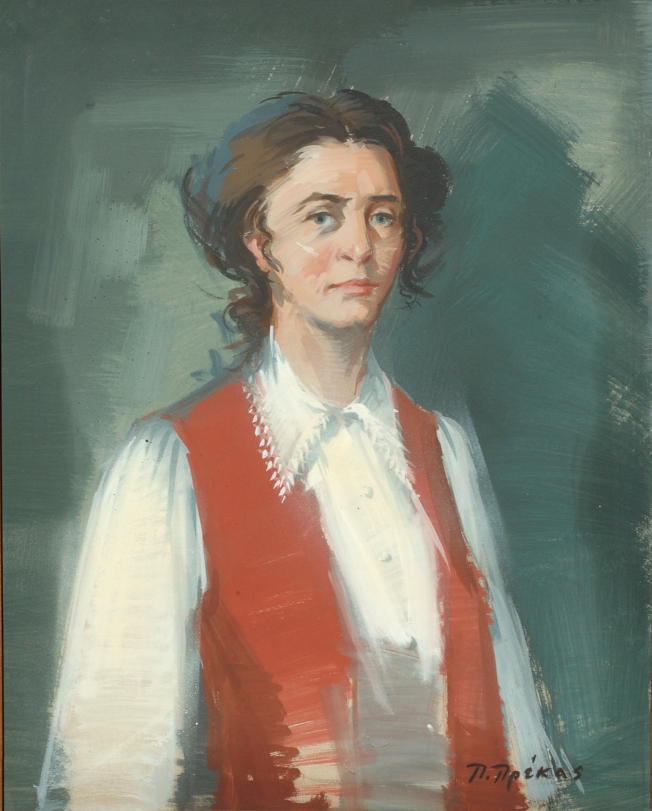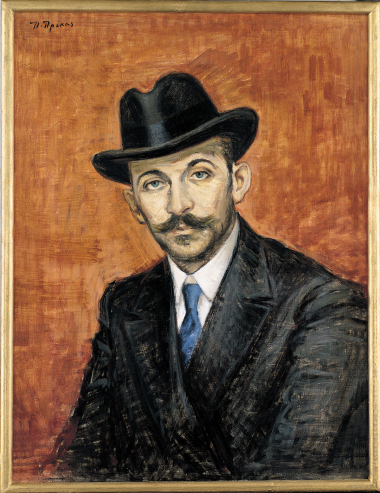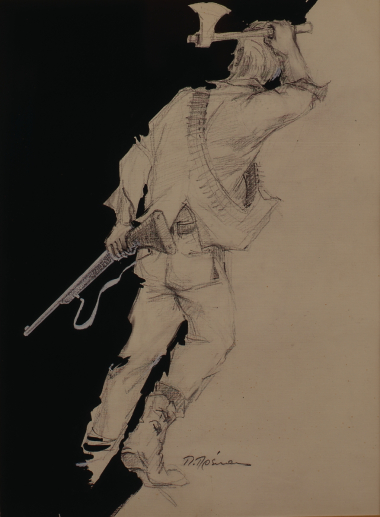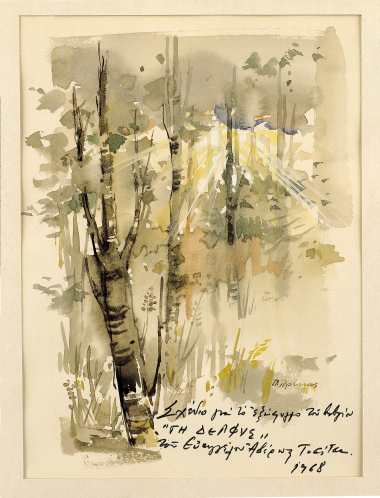Portrait of a woman

It is in the same way that the Prekas has approached his Portrait of a Woman. The rugged and apparently untidy elaboration of the garments and the background have as their purpose to bring out the woman's physiognomy, giving more emphasis to the rendering of the face. The reminder that the subject, in the red waistcoat which she is wearing, may be a woman of the region, demonstrates Prekas's belief that Greece is the place and the people who live there, and the combination of them creates the 'measure' of life.








